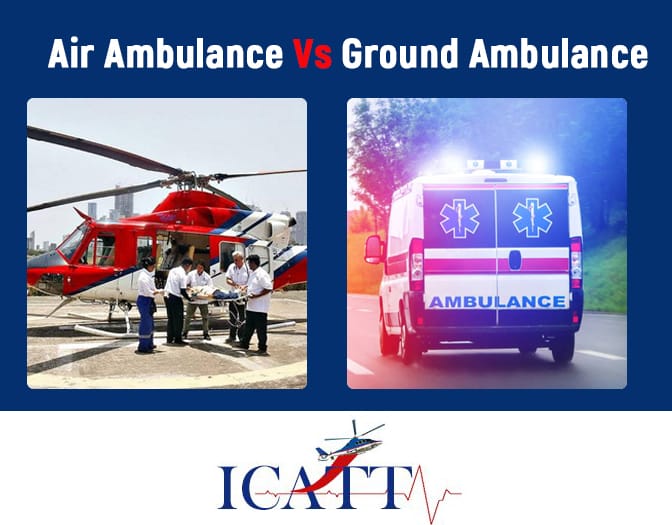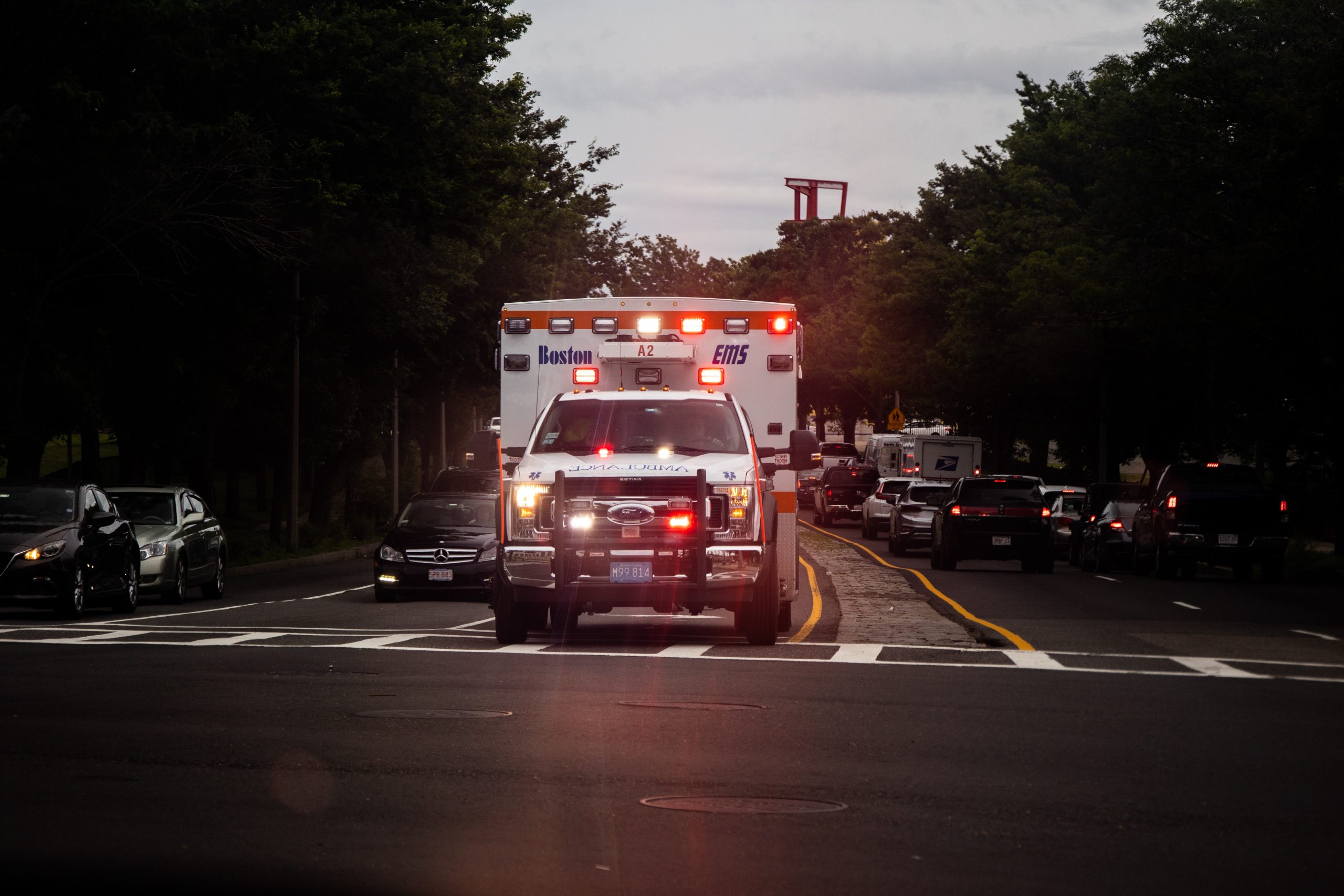Picture this: you’re driving down a bustling city street, surrounded by towering skyscrapers and endless streams of traffic. Suddenly, a siren wails in the distance, growing louder and more urgent by the second. As you pull over, you catch a glimpse of a sleek, state-of-the-art ambulance speeding by, weaving through the maze of cars with ease. Now, let’s switch gears. Imagine you’re in a small, quiet village nestled amidst rolling green hills. The nearest hospital is miles away, and the roads are narrow and winding. In this scenario, it’s unlikely that you’ll spot a fancy ambulance racing to the rescue. Why? Because when it comes to ambulance choice, geography plays a significant role. In this article, we’ll explore the impact of geography on ambulance choice in urban and rural areas, shedding light on the fascinating differences that influence the kind of help we can expect in times of crisis.
Urban vs. Rural: Understanding the Difference
When it comes to understanding the differences between urban and rural areas, several factors come into play. These include population density, infrastructure and road network, and access to healthcare facilities. Each of these elements has a direct impact on transportation and ultimately affects the choice of ambulance services available in these areas.
Defining urban and rural areas
Before diving into the transportation challenges and ambulance options in each setting, it’s important to define what is meant by urban and rural areas. Urban areas are typically characterized by high population density, extensive development, and a higher concentration of buildings, businesses, and amenities. On the other hand, rural areas are characterized by low population density, open spaces, and a more natural landscape.
Population density
One of the key differences between urban and rural areas is the population density. In urban areas, the population is often concentrated in a smaller geographic area, leading to more crowded living conditions. This high population density poses unique challenges for transportation and emergency services, as there is a greater demand for immediate medical attention.
In rural areas, however, the population is spread out over a larger area. This low population density can make it more challenging for ambulance services to reach patients quickly, especially in remote or isolated regions. The sparse population means that ambulances may need to cover long distances to provide medical assistance, leading to longer response times.
Infrastructure and road network
Another crucial factor that distinguishes urban and rural areas is the infrastructure and road network. In urban areas, there is generally a well-developed network of roads, highways, and streets. This comprehensive infrastructure allows for easy accessibility and navigation, enabling ambulances to reach their destinations quickly.
In contrast, rural areas often have limited road access and less developed infrastructure. This can pose significant challenges for ambulance services, especially when attempting to reach remote or hard-to-reach locations. Narrow and winding roads, unpaved surfaces, and rugged terrain can hinder the progress of ground-based ambulances, making it difficult to provide timely medical assistance.
Access to healthcare facilities
One of the most critical considerations in ambulance choice is access to healthcare facilities. In urban areas, there is typically a higher concentration of hospitals, clinics, and specialized medical centers. This proximity to healthcare facilities allows for quicker access to specialized care and reduces the need for long-distance patient transfers.
In rural areas, however, access to healthcare facilities may be limited. The distance between hospitals or medical centers can be significant, requiring patients to travel long distances for necessary care. This lack of proximity to specialized medical services makes it crucial for ambulance services in rural areas to be equipped to handle critical patients and provide immediate on-site care when necessary.
Transportation Challenges in Rural Areas
While rural areas offer the tranquility and beauty of nature, they also present unique transportation challenges. These challenges can significantly impact the availability and effectiveness of ambulance services in these areas.
Limited road access
One of the primary challenges faced by ambulance services in rural areas is limited road access. The presence of narrow or unpaved roads, coupled with rough terrain, can make it difficult for ambulances to navigate and reach patients swiftly. In some cases, ambulances may even need to rely on off-road vehicles to provide medical assistance in remote or inaccessible locations.
Longer response times
A direct consequence of limited road access is longer response times in rural areas. Ambulances often have to cover vast distances to reach a patient in need. This prolonged travel time can result in delays in providing medical assistance, which can have grave implications for patients in critical condition.
Geographical obstacles
Rural areas often present geographical obstacles that further complicate ambulance services. Mountains, hills, rivers, and other natural features can impede the progress of ground-based ambulances. Ambulance crews may have to navigate winding and treacherous routes, which can be time-consuming and potentially dangerous.
Weather conditions
Weather conditions can also pose significant challenges for ambulance services in rural areas. Harsh weather, such as heavy snowfall, storms, or floods, can make roads impassable or unsafe for travel. This can hinder the ability of ground-based ambulances to reach patients in a timely manner, further compromising their health and well-being.
Advantages of Air Ambulances in Rural Areas
Given the transportation challenges faced by ambulance services in rural areas, air ambulances provide a valuable solution. These specialized aircraft offer several advantages in terms of response times, overcoming geographical obstacles, and accessing specialized care.
Faster response times
One of the most significant advantages of air ambulances in rural areas is their ability to provide faster response times. Compared to ground-based ambulances, air ambulances can cover vast distances in a fraction of the time. This rapid response is crucial in emergencies where every second counts, particularly for patients in critical condition or those facing life-threatening situations.
Overcoming geographical obstacles
Air ambulances have the unique ability to overcome geographical obstacles that may hinder ground-based ambulances. By utilizing the airspace, air ambulances can bypass mountains, rivers, and other natural barriers that may impede ground transportation. This means that patients in remote or inaccessible locations can receive the medical attention they urgently need.
Quick access to specialized care
Another significant advantage of air ambulances in rural areas is their ability to provide quick access to specialized care. In areas where specialized medical facilities are scarce, air ambulances can transport patients directly to specialized centers. This reduces the need for long-distance transfers and ensures that patients receive the most appropriate care as soon as possible.
Reduced impact of weather conditions
Air ambulances are not as heavily impacted by adverse weather conditions as ground-based ambulances. While ground ambulances may struggle to navigate snow-covered roads or flooded areas, air ambulances can operate regardless of weather conditions. This ensures that patients in rural areas can receive medical attention even during inclement weather.
Limitations of Air Ambulances in Rural Areas
While air ambulances offer significant advantages in rural areas, there are also limitations that need to be considered. These limitations include availability and accessibility, cost considerations, landing zone limitations, and weather-dependent operations.
Availability and accessibility
The availability and accessibility of air ambulances in rural areas can be limited. Due to logistical constraints, remote regions may not always have immediate access to air ambulance services. The distance from an air ambulance base and the time it takes for the aircraft to reach the patient’s location can impact the overall response time.
Cost considerations
Air ambulance services can be costly, and this expense may be a limiting factor for some rural communities. The high operating costs associated with air ambulances, including aircraft maintenance, fuel, and experienced medical personnel, can make these services financially burdensome. Limited healthcare budgets in rural areas may restrict the availability of air ambulance services.
Landing zone limitations
Due to their size and landing requirements, air ambulances may face limitations when it comes to finding suitable landing zones in rural areas. The availability of helipads or other designated landing areas can be scarce, particularly in remote locations. This can result in additional delays as the air ambulance crew works to identify and secure a suitable landing site.
Weather-dependent operations
While air ambulances are generally more resistant to adverse weather conditions, there are still limits to their operations. Severe weather, such as thunderstorms, high winds, or low visibility, can ground air ambulance flights. This can impede the ability of air ambulances to provide timely medical assistance, especially in areas prone to extreme weather events.
Ambulance Options in Urban Areas
In contrast to rural areas, urban settings offer a different set of challenges and advantages when it comes to ambulance services. The higher population density and proximity to medical facilities shape the ambulance options available in cities.
Presence of multiple healthcare facilities
Urban areas are characterized by the presence of multiple healthcare facilities, including hospitals, clinics, and specialized medical centers. This concentration of medical services allows for a more extensive network of ground-based ambulances that can respond quickly to emergencies and provide immediate on-site care.
Availability of ground-based ambulances
Ground-based ambulances are the primary ambulance option in urban areas. These vehicles are equipped with medical equipment and staffed by trained professionals who can administer emergency care. The greater accessibility of ground-based ambulances in urban areas ensures prompt response times and allows patients to receive timely medical attention.
Traffic congestion and its impact
One of the significant challenges faced by ground-based ambulances in urban areas is traffic congestion. High population density, coupled with heavy traffic flow, can impede the progress of ambulances, resulting in longer response times. Navigating through congested streets and intersections requires skilled drivers and effective coordination with local authorities.
Proximity to specialized medical centers
Proximity to specialized medical centers is a significant advantage for urban areas. In emergencies requiring specialized care, ground-based ambulances can quickly transport patients to the nearest appropriate facility. This reduces the need for long-distance transfers and ensures timely access to the necessary medical expertise.
Role and Importance of Ground-based Ambulances in Urban Areas
Ground-based ambulances play a crucial role in providing emergency medical services in urban areas. Their presence, versatility, and ability to navigate through congested streets make them indispensable in these settings.
Navigating congested traffic
One of the key responsibilities of ground-based ambulances in urban areas is navigating through congested traffic. Ambulance drivers are trained to effectively maneuver through busy streets, intersections, and highways, ensuring that patients are reached as quickly as possible. This skill is vital in urban environments where traffic congestion can significantly impact response times.
Providing immediate on-site care
Ground-based ambulances act as mobile medical units, equipped with essential medical equipment and staffed by trained professionals. The ability to provide immediate on-site care is critical in emergency situations and can potentially save lives. Ambulance crews can stabilize patients, administer necessary interventions, and initiate treatment before transporting them to the appropriate healthcare facility.
Transporting non-critical patients
Ground-based ambulances also fulfill the role of transporting non-critical patients in urban areas. Non-critical patients may require medical transport for scheduled appointments, transfers between healthcare facilities, or non-emergency conditions. Ground-based ambulances are well-suited to provide safe transportation while ensuring the availability of resources for critical emergencies.
Reducing reliance on air ambulances
In urban areas, where ground-based ambulances are readily available, the reliance on air ambulances is generally reduced. The comprehensive network of ground-based ambulances ensures rapid access to emergency medical services, reducing the need for air transportation. This allows air ambulances to focus on critical patient transfers and responding to emergencies in remote or hard-to-reach rural areas.
Integration of Air Ambulances in Urban Areas
While ground-based ambulances are the primary mode of emergency medical transportation in urban areas, there is still a role for air ambulances to play. The integration of air ambulances into urban emergency response systems can enhance capabilities and overcome certain limitations.
Supporting ground-based ambulance services
Air ambulances can support ground-based ambulance services in urban areas by providing quick inter-hospital transfers for critical patients. When time is of the essence, air ambulances can transport patients between medical centers, facilitating access to specialized care. This integration allows ground-based ambulances to focus on responding to emergencies within the urban environment.
Transporting critical patients between hospitals
Air ambulances have the ability to transport critical patients between hospitals in urban areas more rapidly than ground transportation. This reduces the time required for patient transfers and ensures that patients in need of specialized care are promptly transported to the appropriate medical facility. Such transfers are especially crucial in cases where specialized life-saving interventions are only available at specific hospitals.
Overcoming traffic limitations
In heavily congested urban areas, traffic limitations can impact the response times of ground-based ambulances. Air ambulances can overcome these limitations by bypassing traffic congestion and transporting patients directly to healthcare facilities. With the ability to utilize airspace, air ambulances have a distinct advantage in swiftly reaching patients in urban settings.
Enhancing emergency response capabilities
By integrating air ambulances into urban emergency response systems, overall emergency response capabilities can be enhanced. The availability of air transport allows for a more comprehensive range of services, ensuring that critical patients receive the care they need as quickly as possible. This multi-faceted approach enhances the overall effectiveness of emergency medical services and improves patient outcomes.
Economic Considerations in Ambulance Choice
The choice of ambulance services in both urban and rural areas is influenced by various economic factors that need to be taken into account. Balancing costs and patient outcomes is a crucial consideration in delivering equitable healthcare services.
Cost-effectiveness of air ambulances
Air ambulance services can be costlier than ground-based ambulances due to higher operational expenses. However, their ability to provide rapid response times and access to specialized care can result in better patient outcomes. Cost-effectiveness must be evaluated on a case-by-case basis, considering factors such as distance, patient condition, and availability of alternative transportation options.
Budget constraints in rural areas
Limited healthcare budgets in rural areas can impact the availability and utilization of air ambulance services. The high operating costs associated with air ambulances may strain already limited resources, making it challenging to allocate funds for these services. As a result, rural areas may rely more heavily on ground-based ambulances despite the potential benefits of air transport.
Insurance coverage and reimbursement
Insurance coverage and reimbursement policies may also influence ambulance choice in both urban and rural areas. The extent to which air ambulance services are covered by insurance plans can impact patient access and the financial burden on individuals. Reimbursement rates for air ambulance services also play a role in their availability and utilization.
Balancing costs and patient outcomes
Ultimately, the choice of ambulance services must strive to strike a balance between costs and patient outcomes. The goal is to provide efficient and effective emergency medical transportation while ensuring that healthcare resources are utilized optimally. Careful consideration of the specific needs and constraints of each area, along with the available budget, is essential to achieving this balance.
Technology Advancements and Future Solutions
The field of ambulance services continues to evolve, with advancements in technology offering opportunities for improved communication, coordination, and emergency medical care.
Improving communication and coordination
Advancements in communication technology play a crucial role in improving the coordination of ambulance services. Real-time tracking systems, integrated databases, and electronic medical records enable better communication between ambulances, hospitals, and other healthcare facilities. This enhanced coordination allows for seamless handover of information and optimal patient care.
Utilizing drones in emergency medical services
Drones have the potential to revolutionize emergency medical services by offering rapid response and delivery of critical supplies. In remote or geographically challenging areas, drones can quickly deliver medical equipment, medication, or small diagnostic devices to support ground or air-based ambulances. This technology has the potential to save time, overcome geographical barriers, and improve patient outcomes.
Telemedicine and remote medical assistance
Telemedicine has emerged as a valuable tool in providing remote medical assistance. By utilizing video conferencing, remote diagnostics, and real-time consultations, healthcare professionals can provide medical guidance to emergency medical personnel on the ground. This technology ensures timely access to specialized expertise even in areas where physical presence may be limited.
Emerging technologies in ambulance design
Advancements in ambulance design are also being explored to enhance patient care. Innovations such as specialized ambulances equipped with advanced medical equipment, telemedicine capabilities, and remote monitoring systems can provide better care during patient transport. These advancements ensure that critical interventions can be initiated promptly, resulting in improved patient outcomes.
Conclusion
Understanding the impact of geography on ambulance choice is crucial for providing equitable healthcare access in both urban and rural areas. Each setting presents unique challenges and advantages that shape the available ambulance options. While air ambulances offer faster response times, overcome geographical obstacles, and provide quick access to specialized care in rural areas, they also face limitations in availability, accessibility, cost, and operational constraints. Ground-based ambulances play a fundamental role in urban areas by navigating through congested traffic, providing immediate on-site care, and transporting non-critical patients. Integrating air ambulances into urban emergency response systems enhances capabilities, overcomes traffic limitations, and improves emergency response. Economic considerations, technology advancements, and future solutions further shape the landscape of ambulance services, with a focus on cost-effectiveness, patient outcomes, and the integration of innovative technologies. By adapting ambulance services to suit the specific needs of each setting and fostering collaboration between air and ground-based ambulance providers, healthcare access can be optimized and ensure that no individual is left without timely and appropriate medical attention.



